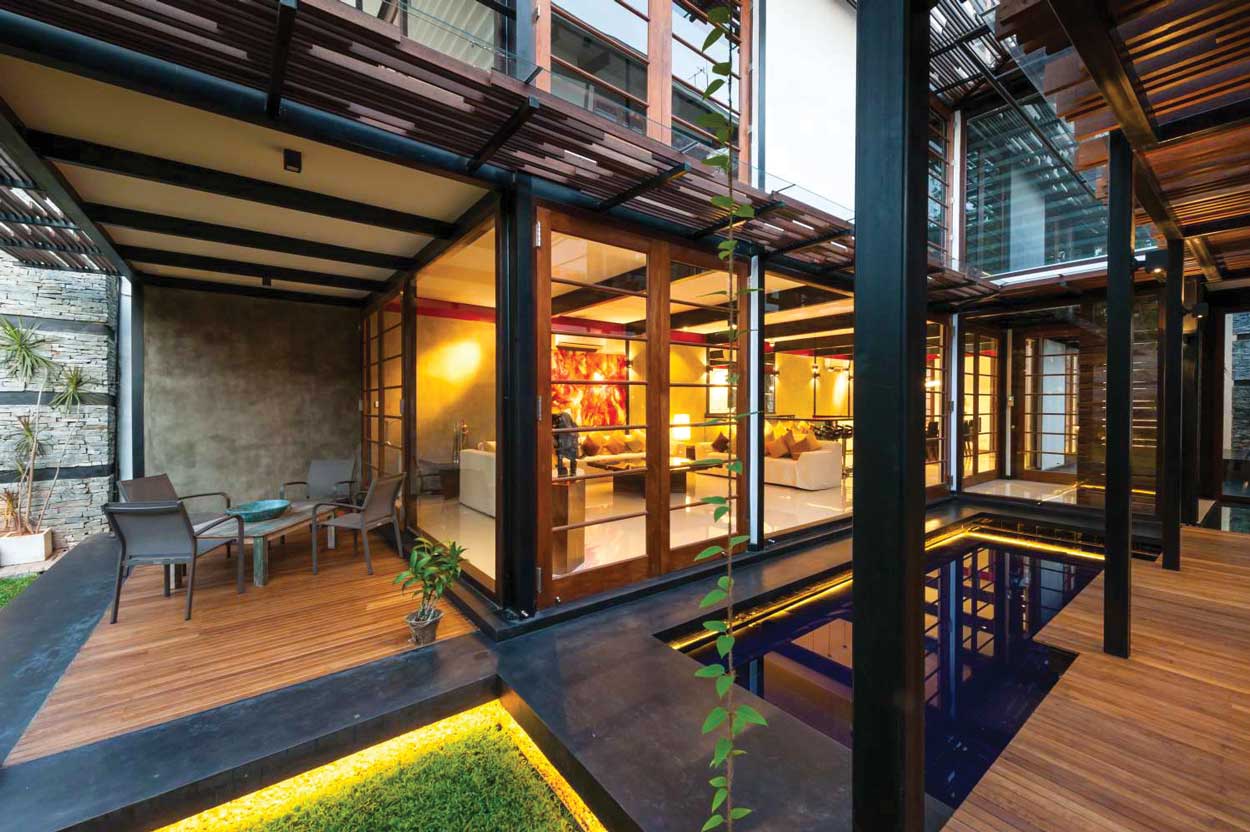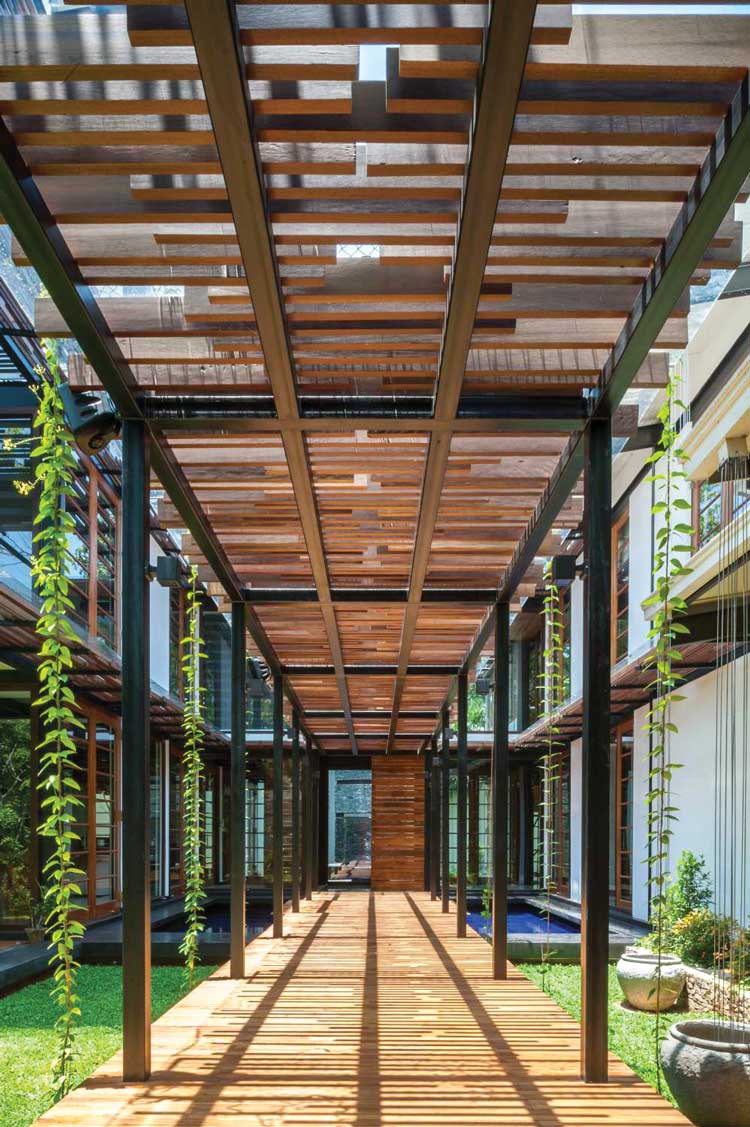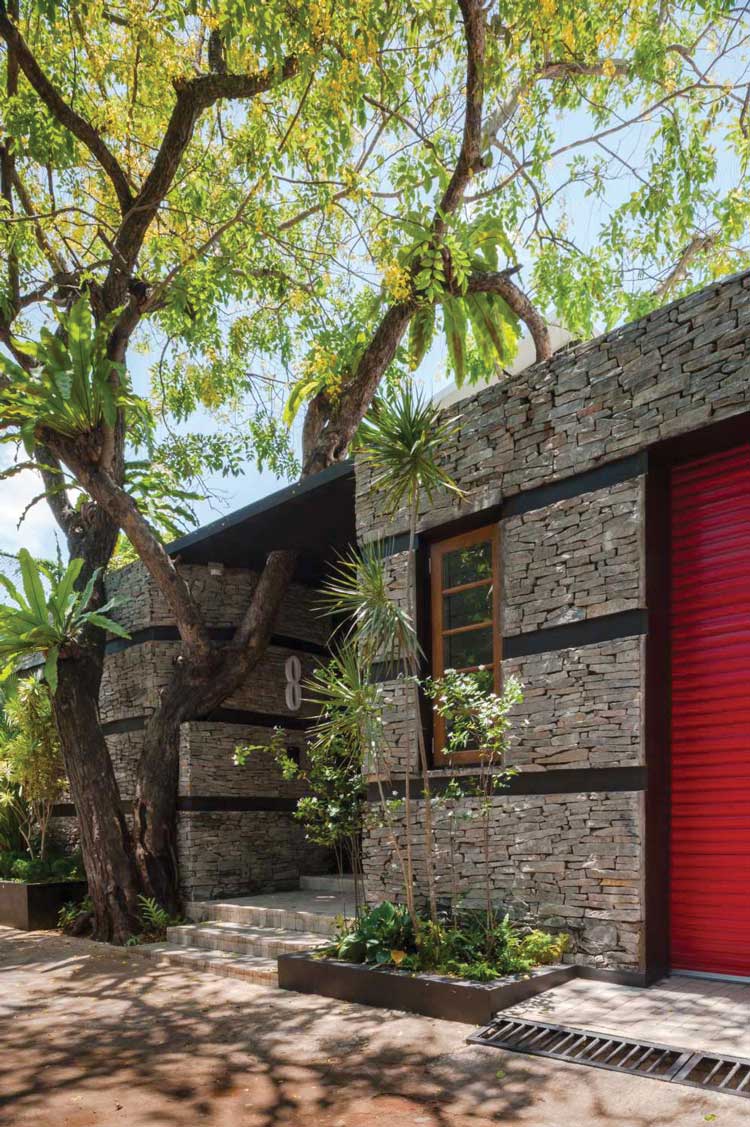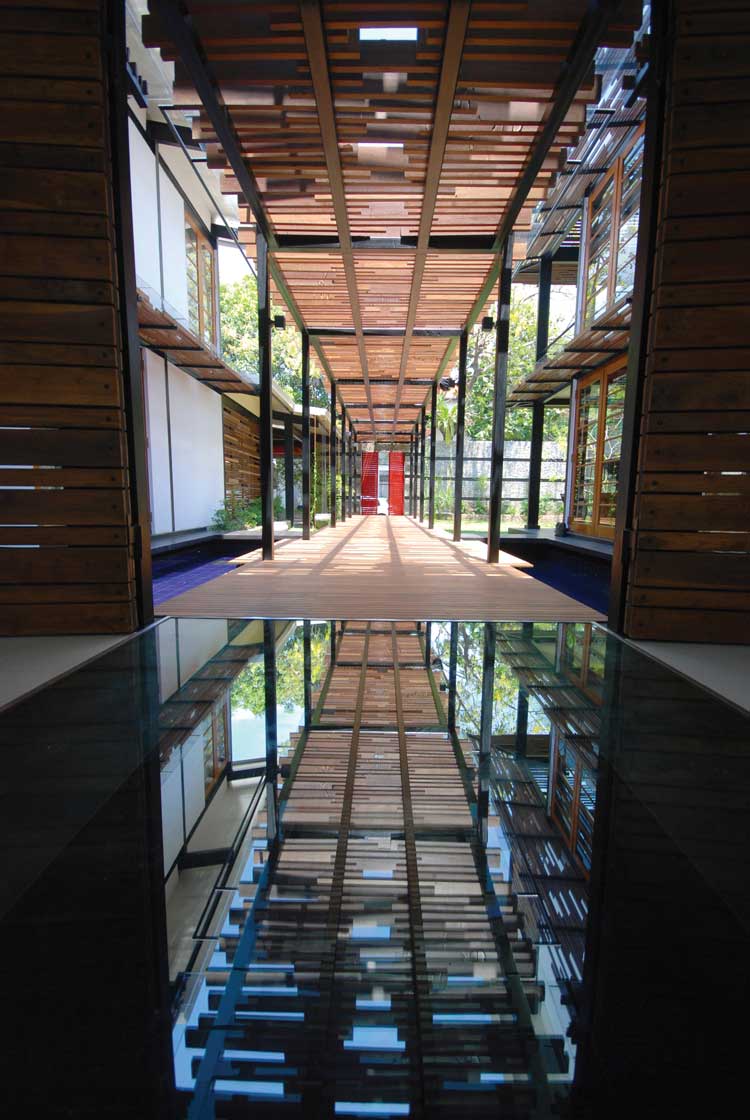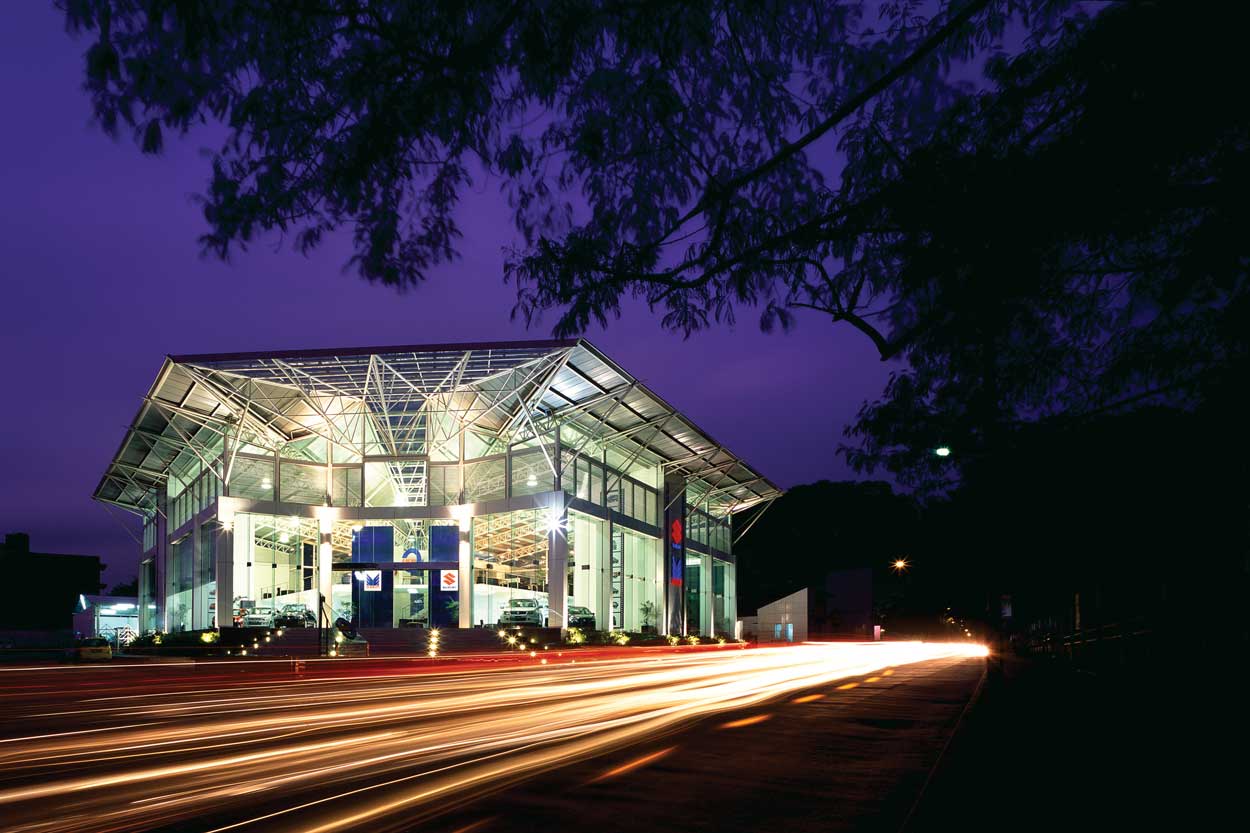THE ROLE OF ART
Architecture and how it can benefit from arty aesthetics
Nela De Zoysa in conversation with Nicola Jayasundera
Artist and architect Nela De Zoysa is an Honorary Fellow of the American Institute of Architects (AIA); and a Fellow of the Sri Lanka Institute of Architects (SLIA), the Royal Institute of British Architects (RBIA) and the Royal Australian Institute of Architects (RAIA).
As the first Sri Lankan to have won the ARCASIA Gold Medal and also the first woman in the island to win the South Asian Architects Award – and with many more prestigious awards under her belt – Nela plays a prominent role in the international architecture arena.
She was the first Sri Lankan to be elected to the Council of the Royal Institute of British Architects (RIBA) and the Strategic Council of the American Institute of Architects (AIA).
Q: In your view, what role does colour and art play in architectural design?
A: The principles of composition in art are common in architecture, interiors, music, photography and so on. And the psychological effects of colour need to relate to the project, to give it meaning and purpose.
Colour must be balanced in architecture and not treated in isolation of light since the latter has an enormous effect on colour.
Nature reveals colours and textures that are evident in plants, animals, birds, insects etc. – and expresses itself in a combination of colours. By applying this theory, colour can either breathe life into a project or kill it as much as it can create an ambience that embodies a sense of joy.
Q: How do you think the profession can change to encourage equality?
A: The practice of architecture had been confined to the male bastion until women emerged in the early 20th century with their inimitable edifices. The women to men ratio in classrooms is about 50:50 – unfortunately, only 15 percent of women emerge as practising chartered architects.
To inspire the remaining 35 percent female architects, the AIA in collaboration with RIBA launched ‘Women in Architecture and Design’ in 2020, to showcase internationally acclaimed women architects who articulated their individual journeys, as well as the obstacles and challenges they overcame to achieve success.
Sri Lanka’s Minnette de Silva – who was bestowed with a gold medal by the SLIA – forged ahead as Asia’s first RIBA qualified architect and influenced many male architects of her time.
Q: Is enough being done to encourage young talent in this field?
A: Yes! Sri Lanka has four schools of architecture for an architectural fraternity of 1,500 members. Incidentally, it was my father Dr. Justin Samarasekera who brought architectural education to Sri Lanka from the RIBA.
Having chaired the Board of Architectural Education of the SLIA from 2019 to 2021, I can confirm that the institute maintains very high standards and uses stringent methodologies.
Students from all four schools and Sri Lankans living overseas need to sit for the Professional Practice Examination to register as Chartered Architects with the Architectural Registration Board (ARB), which provides the licence to practise.
Q: How effective is Sri Lanka in promoting the arts and what policies would further enable this?
A: Sri Lanka fairs poorly in terms of giving a place to talented artists and sculptors. Only a handful of practising architects want painting and sculpture to be part of their architectural edifices.
Landscape architecture is another aspect that needs to be brought to the forefront with the degree in landscape architecture that’s offered by the University of Moratuwa.
Ten percent of the cost of architectural projects ought to be allocated for works of art and sculpture, similar to those that adorn buildings in developed countries and regions such as the US, the UK, Europe and Japan.
Sri Lanka should follow suit and develop a policy for this since we have produced some outstanding contemporary artists of world acclaim whose talents we need to harness.


